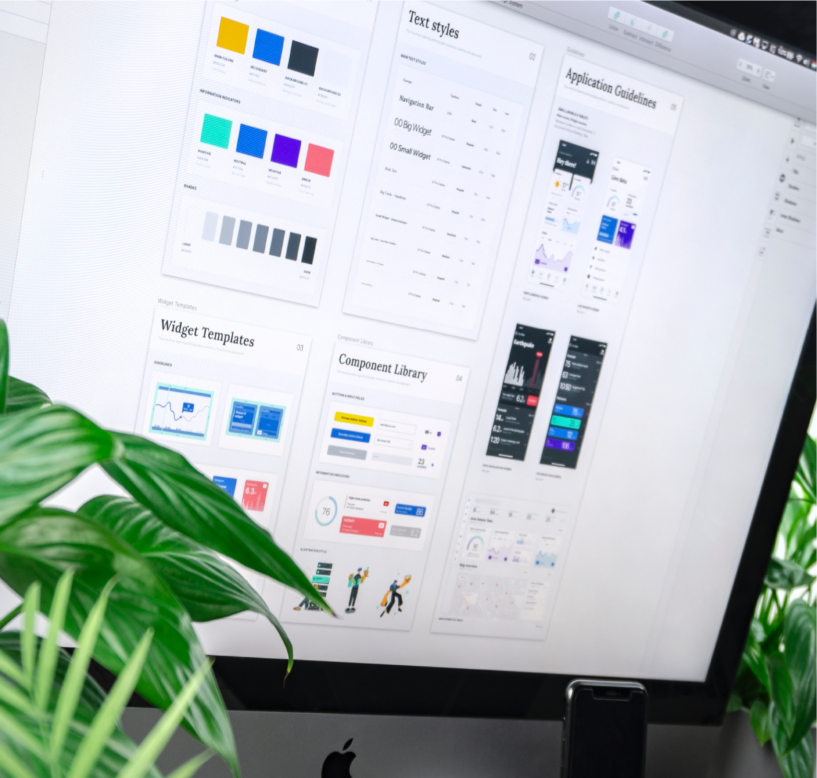How to get your business site right
Like it or not, your website is a public document that gives potential customers a lot of information about your business. It should be clean, engaging, and easy to navigate, and show people that your business values great design, simplicity, accessibility and communication. If it’s a mess of mismatched design elements and missing information, people will get the impression that your business is a mess as well, even if that’s not true.
Getting your website right is an essential part of bringing in new business. The problem is, many business owners see web development as something they can simply hand over to an outside contractor and tick off their list – but it’s not that easy. Designing and building a new website takes a lot of thought and effort from the business owner as well as the web developer – particularly if you want to get it right the first time.
The more care you put into the elements of your website – design, functionality, adaptability, integrated social media – the longer it will serve as a great first impression for your business. Even better, you’ll save money down the line as you won’t need to pay for a full refresh to solve problems caused by poor design.
After years in the web development space, we know what works – and what doesn’t. Here are our key considerations if you want to get your site right from the beginning.
1: Design-led development
Often, design elements and the technical framework of a website are developed in tandem. This seems efficient, but it can lead to issues in both areas. If the design isn’t done before the build starts, the developer will need to think like a designer and make decisions around navigation and layout. Then, design decisions have to adapt to the existing code – which means your designer isn’t necessarily able to pick the best options. It all adds up to a lot of back-and-forth between developer and designer as both parties compromise on important elements, and you end up with a website that doesn’t quite work or look as you want it to.
It’s far better to sign off on the design phase before you start developing the website itself. Rather than both designer and developer making compromises and changing their work as they go, one follows the other, minimising confusion and concessions. Experienced designers will be able to create a design geared towards development, making the developer’s job easier.
2: Built-in flexibility for the future
When your brand-new website goes live, it can be hard to imagine it ever looking dated. But technology and design standards are constantly evolving, so you may need to make changes sooner than you think.
Designing with future flexibility in mind means making it easy to make changes – even if you don’t know what those changes will be. The framework of your site – design and functionality – needs to be flexible enough to change with your business. Graphics and design elements should be simple to switch, in case your logo or other design features change. You should be able to add new pages, tabs, and other functional elements as needed, in case you add new services or product lines in future.
Without built-in adaptability, your site may not be able to keep up – and you could be looking at an expensive redesign or rebuild in just a few years.
3: Prioritise social media integration
These days, social media are crucial aspects of your digital marketing strategy. More and more, companies are putting social media front and centre by integrating them into their websites. Dynamic social media elements like Instagram or Facebook feeds give you constant content updates and can help customers find out more about your business. It’s also a great way to get more out of your marketing – your social posts appear on the original platform and on your website, maximising their exposure.
But adding dynamic social integration after the fact isn’t easy. It’s better to build it into your website design from the start. Even if you’re not convinced that you’ll need it, building in social integration gives you options for the future. If your social strategy changes, you’ll be able to add a dynamic feed or other social media elements as needed – and get the full benefit of your social marketing efforts.
4: Seamless content marketing
Now that online search algorithms prioritise original, up-to-date content to boost website rankings, blogs have become a powerful marketing tool. Regular, high-quality blogs can boost search rankings, and can also be promoted across digital platforms, drawing in clients and demonstrating that your business is a leader in your field.
Many businesses have seen the results of a good content marketing strategy over the past few years, and are finding ways to make their blog an integral part of their website.
If you’re building a new site, a built-in blog is a must – and it should be thoughtfully integrated with the rest of your site. Your content management system should allow for easy blog updates and sharing across social platforms. The design should make the blog accessible and appealing – not tucked away on a drop-down menu or hidden at the bottom of the page. Blog pages should be designed for sales, with focused calls to action, action buttons, and enquiry forms to push readers to get in touch. It’s about wringing as much value as possible out of your original content.
Get it right from the get-go
At Unleashing Potential, we’ve been designing and building websites for almost a decade. We’ve seen the evolution of design trends and functionality, the rise of content marketing, and the introduction of built-in social media streams. After years in the business, we know what works and what doesn’t.
Building a website that embodies your business values and works to bring in new customers isn’t an easy task, but it is worth the effort. Get it right and you’ll have a dynamic, adaptable portal to your business for years to come. Get it wrong, and you could find yourself missing out on marketing opportunities and new business.
Build a website that works, right from the start. Get in touch with the Unleashing Potential team now.





